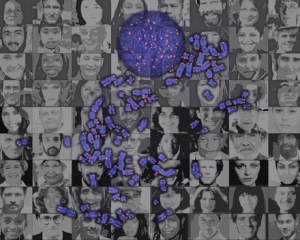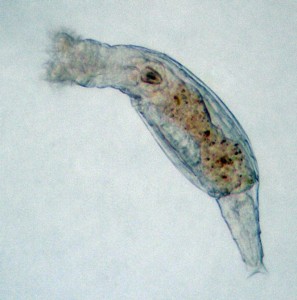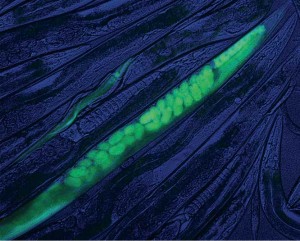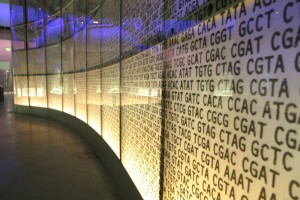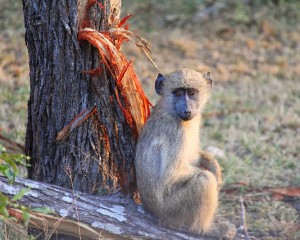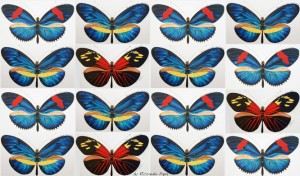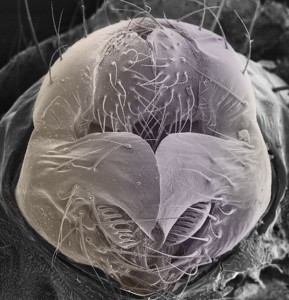Enter your address to receive notifications about new posts to your email.
Articles tagged Genetics Journal
(278 results)
-
August GENETICS Highlights
The August issue of GENETICS is out now! Check out the Highlights below or the full Table of Contents here. ISSUE HIGHLIGHTS Characterizing race/ethnicity and genetic ancestry for 100,000 subjects in the genetic epidemiology research on adult health and aging (GERA) cohort, pp. 1285–1295 Yambazi Banda, Mark N. Kvale, Thomas J. Hoffmann, Stephanie E. Hesselson, Dilrini Ranatunga, Hua Tang, Chiara Sabatti, Lisa…
-
The Secret Sex Lives of the Bdelloid Rotifers
Bdelloid rotifers have been veiled in mystery for decades. Despite extensive studies of this class of tiny freshwater invertebrates, no one has observed any trace of sex: no proven males, hermaphrodites, mating, or meiosis. Unlike other asexual organisms, which tend to be short-lived in evolutionary history, the apparently asexual bdelloid rotifers have managed to persist…
-
The mutation that unlocked corn kernels
If not for a single-nucleotide mutation, each kernel on a juicy corn cob would be trapped inside an inedible casing as tough as a walnut shell. In the July issue of GENETICS, Wang et al. identify an amino acid substitution that was key to the development of the so-called “naked” kernels that characterize modern corn…
-
A genomic balancing act
Allelic expression in the mouse genome is surprisingly unbalanced, according to new research published in the June issue of GENETICS. The factors that determine how a gene is expressed in a given cell are complex. After all, every mammalian cell contains two copies of each gene, and both versions of that gene, called alleles, play…
-
July GENETICS Highlights
The July issue of GENETICS is out now! Check out the Highlights below of the full Table of Contents here. And don’t miss the essays by winners of 2015 GSA Honors and Awards! ISSUE HIGHLIGHTS Fine mapping causal variants with an approximate Bayesian method using marginal test statistics, pp. 719–736 Wenan Chen, Beth R.…
-
Worm101: Caenorhabditis elegans educational Primer
In time for the 20th International C. elegans Meeting, GENETICS has published the next in its series of model organism education Primers. Ann Corsi, Bruce Wightman, and Marty Chalfie introduce Caenorhabditis elegans and the many features that make it an outstanding experimental system. The authors describe the basic biology, genetics, anatomy, genomics, ecology, and evolution…
-
Turning spit and data into treasure
By the time President Obama announced the Precision Medicine Initiative in January 2015, the Genetic Epidemiology Research on Adult Health and Aging (GERA) cohort was already a trailblazing example of this new approach to medical research. GERA is a group of more than 100,000 members of the Kaiser Permanente Medical Care Plan who consented to…
-
Thousands of BRCA1 variants tested by deep mutational scanning
Patients seeking certainty in genetic tests, such as tests for inherited susceptibility to cancer, often receive a perplexing result. Many people learn they carry a “variant of unknown significance” of a disease-linked gene. Such variants might—or equally might not—increase disease risk. In the latest issue of GENETICS, Starita et al. characterized nearly 2000 variants of…
-
June GENETICS Highlights
The June issue of GENETICS is out now! Check out the Highlights below or the full Table of Contents here. ISSUE HIGHLIGHTS Cortical folding of the primate brain: an interdisciplinary examination of the genetic architecture, modularity, and evolvability of a significant neurological trait in pedigreed baboons (Genus Papio), pp. 651–665 Elizabeth G. Atkinson, Jeffrey Rogers,…
-
The molecules behind mimicry
The vibrant passion-vine butterfly species Heliconius erato doesn’t taste as good as it looks. The flesh of this South and Central American species accumulates toxic compounds to discourage would-be predators, who quickly learn to associate the butterflies’ unpleasant taste with their bold red warning colors and patterns. But H. erato isn’t the only species that…
-
May GENETICS Highlights
The May issue of GENETICS is out now! Check out the highlights below or the full Table of Contents here. Efficient multiple-trait association and estimation of genetic correlation using the matrix-variate linear mixed model, pp. 59–68 Nicholas A. Furlotte and Eleazar Eskin Existing approaches to multiple-trait association mapping are computationally intractable for large sample sizes, limiting their…


